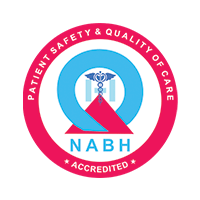ECG Vs. ECHO: Difference Electrocardiogram And Echocardiogram

Importance Of Cardiac Health Assessment
According to several studies, 90% of patients with coronary heart disease have previous exposure to at least one risk factor for heart disease. Identification of vital variables that may have an impact on cardiovascular health, such as high blood cholesterol, cigarette use, diabetes, or hypertension, will be made simpler with the aid of a thorough cardiovascular assessment. Therefore, every comprehensive check should include a cardiovascular examination.
After a complete physical exam identifies a potential cardiovascular issue, the doctor may recommend a focused cardiovascular assessment. When a new symptom appears, the patient exhibits any signs of distress, or the status changes from your previous exam or the report you received; the doctor recommends a focused cardiovascular assessment.
Difference between ECG and ECHO Test
ECG (Electrocardiogram) and Echocardiogram (ECHO) are diagnostic tests used to assess the heart, but they provide different types of information. An ECG[3] measures the heart's electrical activity by recording the electrical signals produced during each heartbeat. On the other hand, an Echocardiogram[1] is an ultrasound test that uses sound waves to create detailed images of the heart's structure and function. Therefore, these two tests serve different purposes and get often used together to provide a more complete assessment of cardiac health.
1. ECG vs ECHO: What Are They?
ECG:
ECG (Electrocardiogram) is a non-invasive diagnostic test that involves placing electrodes on the skin's surface, typically on the chest, limbs, and sometimes the abdomen, to detect and measure the electrical signals produced by the heart during each heartbeat. The ECG tracing provides critical information about the heart's rhythm, rate, conduction abnormalities, and any potential signs of cardiac conditions such as arrhythmias, ischemia (lack of oxygen supply to the heart muscle), and other structural abnormalities.
ECHO:
An echocardiogram (ECHO) is a non-invasive diagnostic test that involves placing a transducer on the chest to emit sound waves that bounce off the heart's structures, creating detailed images of the heart's chambers, valves, and blood flow patterns. Echocardiograms[1] provide valuable information about the heart's size, shape, pumping function, and any abnormalities in the structure or function.
2. ECG vs ECHO: Purpose
ECG:
The primary purpose of an ECG (Electrocardiogram) is to assess[3] the heart's electrical activity. It records and analyzes the heart's electrical signals during each heartbeat. By evaluating the heart's electrical activity, an ECG helps healthcare professionals assess heart rhythm, evaluate heart rate, detect conduction abnormalities, assess myocardial ischemia, and identify structural abnormalities.
ECHO:
The primary purpose[1] of an Echocardiogram (ECHO) is to evaluate the structure and function of the heart using ultrasound technology. It provides detailed images of the heart's chambers, valves, walls, and blood flow patterns. The main objectives of an Echocardiogram are assessing heart function, evaluating heart valves, detecting cardiac abnormalities, assessing blood flow, monitoring treatment progress, and aiding in diagnosis. It helps healthcare professionals gather critical information for treatment decisions and offers valuable insights into a patient's cardiovascular health.
3. ECG vs ECHO: Test Type
|
ECG |
ECHO |
|
During an ECG, small adhesive electrodes get placed in specific locations on the chest, arms, and legs. These electrodes detect and transmit the heart's electrical signals as it contracts and relaxes. The ECG test[3] captures the electrical impulses in the heart and converts them into a graphical representation called an electrocardiogram. The resulting ECG waveform has several unique components, including P waves, QRS complexes, and T waves. These components provide information about the heart's rhythm, rate, and any abnormalities in the electrical conduction system. This test is relatively quick, usually lasting a few minutes. |
During an Echocardiogram[1], a transducer (a handheld device) is placed on the chest or abdomen and emits high-frequency sound waves. These sound waves bounce off the heart's structures and create detailed images on a monitor. The images show the heart's chambers, valves, walls, and blood flow patterns. There are different types of Echocardiograms, including Transthoracic Echocardiogram (TTE), Transesophageal Echocardiogram (TEE), and Stress Echocardiogram. |
4. ECG vs ECHO: Information Provided
ECG:
An ECG (Electrocardiogram) provides critical information about the heart's electrical activity and overall cardiac health. Here are the vital pieces of information that you can obtain from an ECG:
- Heart Rate
- Heart Rhythm
- P Wave
- PR Interval
- QRS Complex
- ST Segment
- T Wave
- QT Interval
- Axis Deviation
ECHO:
An Echocardiogram (ECHO) provides valuable information about the structure and function of the heart using ultrasound technology. Here are vital pieces of information that you can obtain from an Echocardiogram:
- Chamber Size and Thickness
- Valve Function
- Ejection Fraction
- Cardiac Output
- Wall Motion Abnormalities
- Blood Flow Patterns
- Congenital Heart Defects
- Pericardium Assessment
- Tissue Doppler Imaging
5. ECG vs ECHO: Diagnostic Focus
ECG:
The diagnostic focus of an ECG (Electrocardiogram) is primarily on assessing the heart's electrical activity. It provides valuable information that aids in diagnosing and evaluating various cardiac conditions. The diagnostic focus[3] of an ECG includes:
- Heart Rhythm: An ECG helps determine the regularity or irregularity of the heart's electrical impulses, allowing for the identification of different types of arrhythmias.
- Heart Rate: The ECG provides accurate heart rate measurement, indicating the number of heart beats per minute.
- Conduction Abnormalities: An ECG can detect disturbances in the heart's electrical conduction system, such as bundle branch blocks, atrioventricular blocks, or other conduction disorders.
- Ischemia and Myocardial Infarction: Changes in the ECG waveform, such as ST-segment elevation or depression, can indicate myocardial ischemia (lack of oxygen supply to the heart muscle) and help diagnose conditions like angina or acute coronary syndromes, including myocardial infarction (heart attack).
- Cardiac Hypertrophy: The ECG can provide evidence of cardiac hypertrophy, the thickening of the heart muscle, often associated with conditions such as hypertension or cardiomyopathy.
- Assessing Effects of Medications or Electrolyte Imbalances: The ECG can reveal the effects of medications on the heart's electrical activity and detect electrolyte imbalances that can influence cardiac function.
- Screening for Cardiac Abnormalities: An ECG may help screen for various cardiac abnormalities, providing clues to structural conditions or certain genetic heart disorders.
ECHO:
The diagnostic focus of an Echocardiogram (ECHO) is primarily on assessing the structure and function of the heart using ultrasound technology. It provides valuable diagnostic information about various aspects of the heart. The diagnostic focus of an Echocardiogram[2] includes:
- Chamber Size and Wall Thickness: Echocardiograms evaluate the size, shape, and wall thickness of the heart's chambers, helping to assess chamber dilation, hypertrophy (thickening), or other structural abnormalities.
- Valve Function: Echocardiograms assess the function of the heart valves, including their opening and closing movements, to detect abnormalities such as stenosis (narrowing) or regurgitation (leakage).
- Ejection Fraction: Echocardiograms calculate the ejection fraction, which measures the percentage of blood pumped out of the heart with each contraction. It indicates the heart's pumping efficiency.
- Cardiac Wall Motion: Echocardiograms evaluate the movement of the heart's walls to identify abnormal wall motion or areas of reduced contractility, which may indicate heart muscle damage or ischemia.
- Blood Flow Patterns: Echocardiograms visualize blood flow within the heart and major blood vessels, detecting abnormalities such as blood clots, obstructions, or abnormal shunting of blood.
- Congenital Heart Defects: Echocardiograms can detect and evaluate structural abnormalities or malformations of the heart that may be present from birth.
- Pericardium Assessment: Echocardiograms evaluate the pericardium, the protective sac around the heart, for signs of inflammation, fluid accumulation, or other abnormalities.
- Tissue Doppler Imaging: Echocardiograms may use tissue Doppler imaging to assess the velocity and function of the heart's tissues, providing additional information on regional myocardial function.
6. ECG vs ECHO: Procedure
ECG:
The ECG (Electrocardiogram) procedure[3] involves the following steps:
1. Preparation: Electrodes, small adhesive patches, will be placed in specific locations on the chest, arms, and legs.
2. Electrode Placement: Typically, ten electrodes get placed in specific positions, including the chest, wrists, and ankles. The electrodes connect to the wires that transmit the electrical signals from the heart to the ECG machine.
3. ECG Recording: Once the electrodes are in place, the healthcare professional will start the ECG recording by pressing a button on the ECG machine. During this time, the patient needs to remain still and avoid talking or moving to prevent artifacts that may interfere with the accuracy of the recording.
4. ECG Interpretation: The ECG machine records the heart's electrical activity and generates a graphical representation called an electrocardiogram. The recorded ECG then gets interpreted by a cardiologist or trained healthcare professional, who analyzes the various components of the waveform, including the heart rate, rhythm, and other indicators of cardiac function and abnormalities.
5. Results and Follow-up: After the interpretation, the doctor will discuss the results with the patient, explaining any significant findings or abnormalities, thus suggesting further diagnostic tests or treatment options if necessary.
ECHO:
The Echocardiogram[2] (ECHO) procedure involves the following steps:
1. Preparation: The healthcare professional will place small adhesive patches called electrodes on the chest to monitor the heart's electrical activity during the procedure.
2. Gel Application: A gel is applied to the chest to help transmit sound waves and improve the quality of the images.
3. Transducer Placement: The healthcare professional applies a handheld device called a transducer on the chest.
4. Image Acquisition: The transducer captures the sound waves that bounce off the heart's structures. These sound waves create real-time images of the heart on a monitor.
5. Image Interpretation: The recorded images get interpreted by a cardiologist or echocardiographer. The interpretation helps assess cardiac health, detect abnormalities, and make a diagnosis.
6. Results and Follow-up: After the interpretation, the doctor discusses the results with the patient, explaining any significant findings or abnormalities. Further diagnostic tests or treatment options may get recommended if necessary.
7. ECG vs ECHO: Time Spent
ECG:
The time taken for an ECG (Electrocardiogram) procedure is relatively short. The actual recording of the ECG typically takes only a few minutes, usually between 5 to 10 minutes. This time includes the preparation of the patient, electrode placement, and recording the electrical signals from the heart.
ECHO:
The time taken for an Echocardiogram (ECHO) procedure[2] can vary depending on the specific type of Echocardiogram, the case complexity, and the patient's condition. Generally, a standard transthoracic Echocardiogram takes approximately 20 to 60 minutes to complete.
8. ECG vs ECHO: Common Heart Conditions Diagnosed
|
ECG |
ECHO |
|
ECG (Electrocardiogram) is a valuable tool for diagnosing various heart conditions. Some common heart conditions that the doctor can diagnose or assess using an ECG include:
|
Echocardiography (ECHO) is a versatile imaging tool to diagnose and assess various heart conditions. Some common heart conditions that can interpret or evaluate using an Echocardiogram[2] include:
|
9. ECG vs ECHO: Interpreting The Results and Their Complementary Role
ECG (Electrocardiogram) and Echocardiogram (ECHO) are two unique tests that provide complementary information about the heart. The interpretation of their results differs due to the different types of data they provide:
- ECG Interpretation[3]: An ECG records the heart's electrical activity and produces a graphical representation of the electrical impulses. The interpretation of an ECG focuses on analyzing the heart's electrical rhythm and rate and identifying any abnormalities in the electrical conduction system. ECG results typically get presented as a series of waves and intervals, including the P wave, QRS complex, and T wave. Abnormalities in these waveforms may indicate conditions such as arrhythmias, myocardial ischemia, or conduction disorders.
- ECHO Interpretation: An Echocardiogram uses ultrasound technology to create real-time images of the heart's structures, valves, chambers, and blood flow patterns. The interpretation of an Echocardiogram focuses on assessing the structure and function of the heart. The echocardiographer analyzes the size, shape, and movement of the heart's walls, valves, and chambers. They also evaluate blood flow, measure ejection fraction, and assess the presence of any abnormalities or diseases, such as valvular disorders, cardiomyopathies, or congenital heart defects.
While ECG primarily evaluates the heart's electrical activity and rhythm, Echocardiography provides detailed information about the heart's structure, function, and blood flow. The interpretation of ECG results typically gets performed by cardiologists or trained healthcare professionals with expertise in electrophysiology. But, Echocardiogram results get interpreted by echocardiographers or cardiologists specialized in imaging and cardiac ultrasound.
It's worth noting that ECG and ECHO results[4] get interpreted parallelly to gain a comprehensive understanding of a patient's cardiac health. The electrical and structural information helps diagnose and manage various heart conditions more effectively.
10. ECG vs ECHO: Expertise Requirement
ECG (Electrocardiogram) and Echocardiogram (ECHO) tests require different levels of expertise for interpretation and analysis[4]:
- ECG Expertise: Interpreting ECG results requires specialization in electrocardiography and cardiac electrophysiology.
- ECHO Expertise: Interpreting Echocardiogram results requires expertise in cardiac ultrasound and imaging. Echocardiographers, cardiac sonographers, and cardiologists specializing in echocardiography get trained to analyze and interpret echocardiographic images.
Both ECG and ECHO interpretations require a high level of proficiency and experience. It is crucial to have healthcare professionals with the appropriate training and expertise in each modality to ensure accurate and reliable results.
11. ECG vs ECHO: Limitations
Both ECG (Electrocardiogram) and Echocardiogram (ECHO) tests have limitations despite being valuable diagnostic tools for assessing cardiac health. Here are some of them associated with each:
ECG Limitations:
- Limited Structural Information
- Lack of Detailed Imaging
- Timing Sensitivity
ECHO Limitations:
- Operator Dependency
- Limited Acoustic Windows
- Incomplete Evaluation of Coronary Arteries
- Inability to Assess Some Structures
12. ECG vs ECHO: Risks Involved
ECG (Electrocardiogram) and Echocardiogram (ECHO) tests are safe and non-invasive. However, there are minimal risks associated with each. It's important to note that while the tests carry minimal risks, only a qualified doctor should interpret the results and make subsequent decisions.
13. ECG vs ECHO: Costs
The cost of medical procedures, including ECG (Electrocardiogram) and Echocardiogram (ECHO), can vary depending on several factors, such as the location, facility, and specific patient requirements. In India, the cost of these tests can vary across different cities and healthcare providers. However, the cost can range anywhere between INR 500 to INR 2000 or more, depending on how advanced the test is.
14. ECG vs ECHO: Table Comparison
|
Parameters |
ECG |
ECHO |
|
Purpose |
Recording of the heart’s electrical activity. |
Creates pictures of the beating heart. |
|
Uses |
Used to detect damage of muscles in the heart or arrhythmias. |
Detect the conditions of hearts. |
|
Technique |
Results are detected by attaching 12 patches to the chest, legs, and arms. |
Results are detected by using a transducer over the chest area. |
|
Form used |
Electrodes are used to detect. |
Uses sound waves to detect. |
|
Form of result |
Results are displayed on paper. |
The images are shown on a computer. |
Factors Influencing the Selection of ECG or ECHO
The selection of whether to perform an ECG (Electrocardiogram) or an Echocardiogram (ECHO) depends on various factors that help determine the most appropriate diagnostic tool[4]. Here are some factors that influence the selection between ECG and Echocardiogram:
- Symptoms and Clinical Presentation
- Purpose of the Test
- Risk Factors and Medical History
- Physical Examination Findings
- Clinician's Judgment
FAQs About ECG and ECHO
When looking for answers, getting adequate ones concerning your health remains vital. Here are the answers to some of the frequently asked questions about ECG and ECHO tests.
Q1. Which is more accurate, ECG or ECHO?
The information provided by echocardiograms on heart valve function is also accurate. They can even determine whether a heart valve is tight or leaky. The echocardiogram is thought to be more accurate for assessing the structure and function of the heart, even though the ECG can help with many of these diagnoses.
Q2. Is echo required if ECG is normal?
If your ECG test results are abnormal, doctors will typically prescribe an ECHO. An ECHO gets used to identify myocardial infarction in its early stages, detect cardiomyopathies, and diagnose valvular heart disease and congenital cardiovascular disease.
Q3. Can ECG/ECHO detect heart blockage?
An ECHO analyzes the rate and flow of blood through the heart and blood vessels. Doctors can use it to check the blood pressure in the heart arteries and show blocked or leaking valves.
Q4. Is ECG enough to detect heart problems?
Although it doesn't always detect every heart issue, an ECG is fairly accurate at diagnosing many types of heart disease. Even if your ECG is completely normal, you might still have a heart condition. Therefore, speak with your doctor for accurate diagnosis and treatment.
Conclusion
Diagnostic tools for the heart's muscles, valves, and rhythm include ECG and ECHO. For determining the cause of various heart problems, these tests are essential. They are also simple, non-invasive, and reasonably priced compared to other diagnostic methods.
Schedule Your Cardiac Assessment at DPU Hospital
Our expert team of cardiologists and physicians is skilled in addressing your needs, and we at DPU Hospital pride ourselves on providing top-notch patient care. To address any cardiac issues, request an appointment with a cardiac assessment consultant here.
References:
[1] https://www.nhs.uk/conditions/echocardiogram/
[2] https://my.clevelandclinic.org/health/diagnostics/16947-echocardiogram
[3] https://physicians.wustl.edu/ekg-vs-echo-heart-health-can-depend-on-both/
[4] https://www.heartfoundation.org.nz/your-heart/heart-tests








